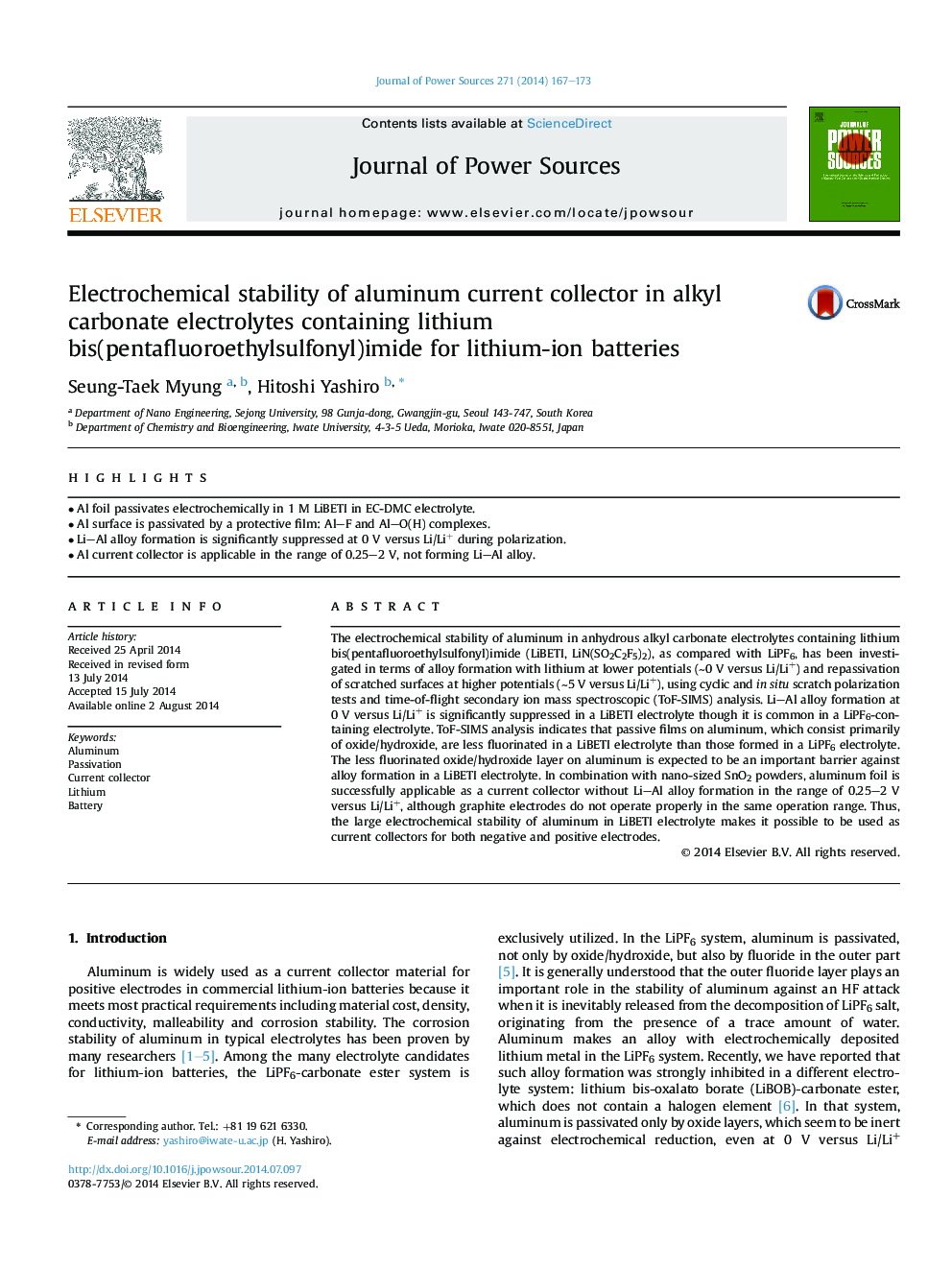| Article ID | Journal | Published Year | Pages | File Type |
|---|---|---|---|---|
| 7735906 | Journal of Power Sources | 2014 | 7 Pages |
Abstract
The electrochemical stability of aluminum in anhydrous alkyl carbonate electrolytes containing lithium bis(pentafluoroethylsulfonyl)imide (LiBETI, LiN(SO2C2F5)2), as compared with LiPF6, has been investigated in terms of alloy formation with lithium at lower potentials (â¼0Â V versus Li/Li+) and repassivation of scratched surfaces at higher potentials (â¼5Â V versus Li/Li+), using cyclic and in situ scratch polarization tests and time-of-flight secondary ion mass spectroscopic (ToF-SIMS) analysis. Li-Al alloy formation at 0Â V versus Li/Li+ is significantly suppressed in a LiBETI electrolyte though it is common in a LiPF6-containing electrolyte. ToF-SIMS analysis indicates that passive films on aluminum, which consist primarily of oxide/hydroxide, are less fluorinated in a LiBETI electrolyte than those formed in a LiPF6 electrolyte. The less fluorinated oxide/hydroxide layer on aluminum is expected to be an important barrier against alloy formation in a LiBETI electrolyte. In combination with nano-sized SnO2 powders, aluminum foil is successfully applicable as a current collector without Li-Al alloy formation in the range of 0.25-2Â V versus Li/Li+, although graphite electrodes do not operate properly in the same operation range. Thus, the large electrochemical stability of aluminum in LiBETI electrolyte makes it possible to be used as current collectors for both negative and positive electrodes.
Related Topics
Physical Sciences and Engineering
Chemistry
Electrochemistry
Authors
Seung-Taek Myung, Hitoshi Yashiro,
